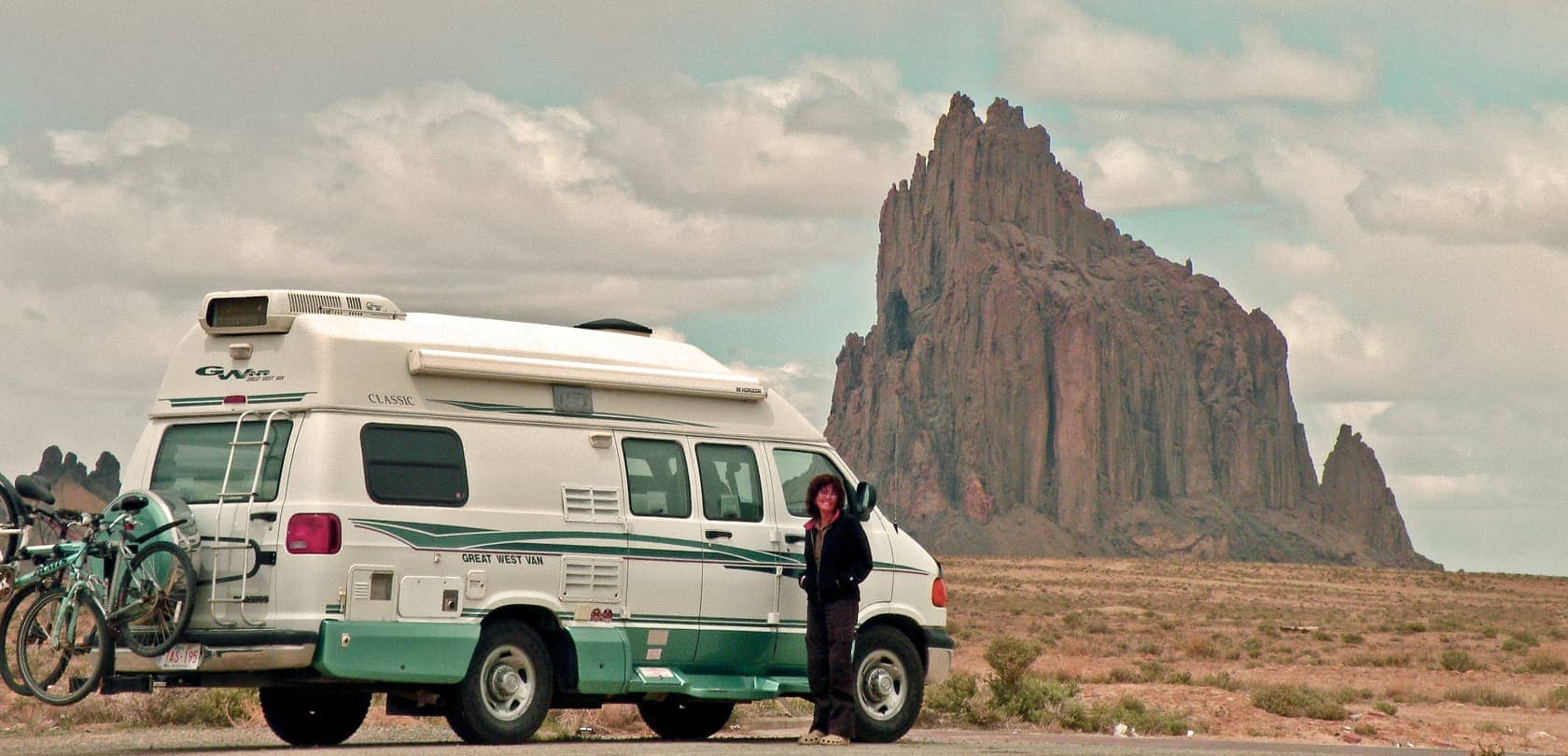
Photo credit: Gerry Feehan
May 11, 2010 – Navel of the Earth, Mesa Verde, Colorado
Camping has re-affirmed some of life’s simple pleasures: a hot shower and a private cubicle with two-ply. There is a vast disparity in the quality of America’s campgrounds and since we are flying by the seat of our pants never knowing where the wind will blow us — except away from Gallup NM, that’s a goddam guarantee — every night is pot-luck in the sleeping quarters department.
State parks tend to be scenic, remote and cheap but lacking in facilities: often no electricity or showers and internet… forget it. Private campgrounds, particularly those located in or adjacent to urban areas, are a little more expensive, usually very clean and modern but rather sterile and cramped.
One must to be careful when opening one’s van door for fear the wind will fling a vehicular appendage unceremoniously into the polished and gleaming aluminum of a beefy and humorless Vietnam vet’s Airstream.
But tight quarters can have its advantages. Often you can save the two-buck cable TV hook-up fee and watch the boob tube through your neighbor’s trailer window.
But you must have a penchant for reality TV, often in Spanish.
The Four Corners is that unique intersection of Arizona, New Mexico, Colorado and Utah, the only place in America where four States meet at a crossroad. As we passed from Arizona, past Shiprock pinnacle in New Mexico and north toward Mesa Verde in southwest Colorado, the few clouds in an otherwise sunny southern morning sky reflected the desert red of the towering rock.
Mesa Verde National Park, America’s first World Heritage Site is truly the United State’s premier archaeological wonder. How can I say this? Because I plagiarized these words from a tourist brochure.
Mesa Verde really makes you ponder. Why would the ancient Anasazi people have built these inaccessible cliff-top pueblos high in the mesa canyons? Why were some areas clearly private, designed only for families? Were the large circular underground Kivas intended as common areas?
And, most importantly, why did the people abandon these remarkably well-preserved structures after only one century (ca.1200-1300 A.D.) of habitation? Was it due to warfare or extended drought or was it perhaps because a thirteenth century Anasazi condo board president was lording it over the chief water-fetcher?
We signed up for two enlightening tours of the cliff dwellings of Mesa Verde. Within each stone Kiva is a small pit known as the Sipapu, “the navel of the earth,” from which according to native oral history all life originated. Until their re-discovery in the 1880’s these remains had withstood almost six centuries as vacant silent sentinels.
We stood in wonder and awe. Then, the navel-gazing over, we surreptitiously pocketed a few priceless archaeological souvenirs, trampled some delicate cryptobiotic soil and beat a hasty retreat past the tourist hordes and out through the exit pueblo.
It was time to head into Utah, to Moab known as the world’s premier mountain biking destination and home to the wondrous Arches National Park.
Gerry & Florence
